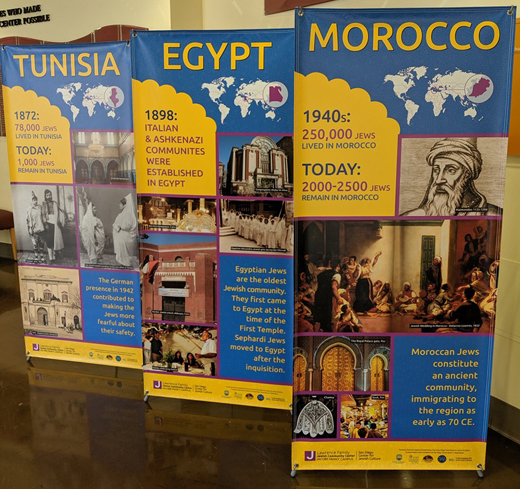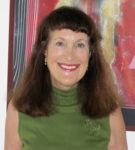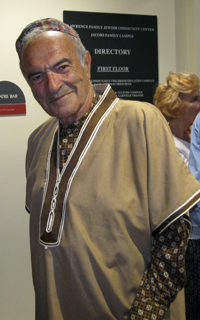


LA JOLLA, California — When I was in my 20’s, my two sisters and I lived in Mexico City in a Jewish area known as Colonia Polanco. We had an apartment on a street called Tennyson in an older, run-down building that had been quite lovely in its heyday. There were two Sephardic families living in the same building. The grandparents lived below us and the daughter, her husband and six kids lived above us. All day long, the grandmother and the daughter would call to each other from the kitchen as the building was open in the middle. They would talk, argue, yell and all of it was in Ladino, the language of Sephardic Jews who fled from Spain during the inquisition. Although we would shake our heads in disbelief, those years also piqued my interest in that ancient language and culture. Mexico has a large colony of Sephardic Jews, and although things have changed a lot, there used to be quite a bit of prejudice between the Ashkenazi and the Sephardim, stemming, no doubt, from their differences.
That is why I had to smile on Saturday night at the Sephardic Festival held at the Lawrence Family Jewish Community Center [JCC] this past weekend. There was a short film, Our San Diego Sephardic Voices, about the Sephardim in San Diego. One of the women interviewed said she was in a “mixed marriage” as her husband was Ashkenazi. Another woman spoke about the differences in food as the Sephardic eat much more rice than their eastern European counterparts. Although brief, I found the film to be very interesting and engaging. Kudos to student filmmaker, Julia Elihu on a project well done. Education and information breaks down barriers.
In the United States, the food, culture and traditions of the Ashkenazi or Eastern European Jews is better known, so I applaud the JCC for presenting the lesser known culture and traditions of the Sephardic and Arab Jews from North Africa and the Middle East.
This first Sephardic Festival in San Diego, spearheaded by Leslie Caspi, ran for two days. On Saturday night, it started with a several long dessert tables, posters, and other items that showcased Sephardic history and culture. Then, they had a Sephardic Havdalah with mint leaves. Rabbi/ Cantor Arlene Bernstein from Congregation Beth Israel sang songs. Next, they showed the short film mentioned before, and finally, the main feature of the night was an acclaimed Israeli film from 2006, Three Mothers, directed by Dina Zevi- Riklis. The film chronicles the life of female triplets who were born in Egypt and later moved to Israel. The film won several awards in Israel and my friends really liked it, but I had mixed feelings as I felt it left you hanging in some parts. However, I liked that it was a female-driven movie.
On Sunday, there was a “shuk” or marketplace. My friend was very impressed with the spices and bought a pistachio blend that she said made a delicious rice dish. Finally, in the afternoon, there was a concert featuring the Alhambra Sephardic Music Ensemble.
The festival was well attended and well received and Saturday night, there was a full house. Congratulations to the Lawrence Family JCC and its donors for sponsoring this fun and educational festival in San Diego ,highlighting the richness and diversity of Jewish culture and history.
*
Pollack is a La Mesa-based freelance writer with a particular interest in cross-cultural issues. She may be contacted via mimi.pollack@sdjewishworld.com
Very interesting and well written review of the festival Mimi. Sorry we didn’t have a chance to attend. If you have a chance
read an interesting two part article on the Jews of Girona, Spain in this month and last months copies of the Jewish Journal.
Even more interesting information on the lives of the practicing and hidden Jews in this area. Turns out that Ladino isn’t the only cultural language being spoken by these Sephardim. If you can’t find the articles, let me know, I have copies.